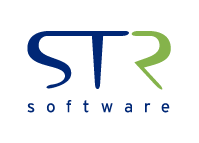Join STR Software at Oracle Open World 2010! Brent Lowe, Manager of Product Development, will present two unique sessions this year and will be accompanied by STR Software’s President, Ben Bruno. This is a great opportunity to meet and talk about all of your document delivery automation needs. Can’t make it to OOW this year? Keep up with the events via STR Software’s blog.
Session Info:
Title: Many Faces of BI Publisher in Oracle E-Business Suite
Session ID#: S319051
Date: Tuesday, September 21, 2010
Time: 12:30 p.m. – 1:30 p.m.
Venue: Moscone West L2
Room: Rm 2011
This session focuses on the many different implementations of Oracle Business Intelligence Publisher within Oracle E-Business Suite by describing what functionality is currently available on a global level (all applications) as well as functionality within specific applications such as Oracle Payables, Oracle Advanced Collections, and Oracle Purchasing. It also covers bursting, the role of configuration files, and out-of-the-box features and functionality. Oracle E-Business Suite product teams have steadily adopted this advanced reporting technology in their specific applications. Unfortunately, not all of the teams have implemented Oracle Business Intelligence Publisher the same way within their modules.
Title: Data Exchange Between Oracle E-Business Suite and Other Systems: The Easy Way
Session ID#: S319050
Track: Application Integration Architecture
Date: Wednesday, September 22, 2010
Time: 11:30 a.m. – 12:30 p.m.
Venue: Moscone West L3
Room: Rm 3006
This session investigates the use of an integrated tool that affords Oracle E-Business Suite users the ability to create, configure, and manage automated event-driven processes (FTP file, e-mail file, submit request) between Oracle E-Business Suite and third-party systems. Creating a link between Oracle E-Business Suite and other systems to process events is always going to be a challenge for IT departments. Unfortunately, achieving an acceptable level of integration between systems comes with a high price: custom code requiring maintenance; costly delays due to limited access to specialized IT resources; and bulky, expensive software.


![Rollup of Product Updates [Spring 2024; v24.1]](https://www.strsoftware.com/wp-content/uploads/2023/02/Feature_Image_ProductUpdate_Wave-510x382.png)

